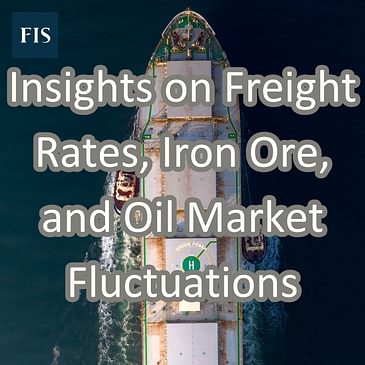Hello and welcome back to Freight Up, the number 1 commodities and freight markets podcast from FIS.
We're your hosts, Jess, and Davide, and in this episode of Freight Up, we’re joined by Ben Klang, who breaks down the latest trends in the dry freight market, Hao Pei provides an insightful analysis of the new Chinese stimulus package's impact on the iron ore market, Archie Smith gives us a comprehensive overview of the current state of the oil market.
Whether you're a current client or someone who's thinking of working with us, this episode's packed with essential information to keep you informed on the critical movements within the trading sphere.
Listen in as we explore these topics and more on Freight Up!
Remember, follow "Freight Up" in your favourite podcast app, and find us on LinkedIn!
And check out our app FIS Live for the latest insights.
Thanks in advance for listening to this Freight and Commodity podcast by FIS!
Useful links:
Timestamps
00:00 Freight rates declined while fuel prices dropped.
04:43 Panamaxis and supermax index rates fluctuate downward.
07:45 Short-run metals trade crowded, impacting gold, silver, copper, zinc.
10:02 Crude oil price remained range-bound, supported.
14:08 Subscribe and follow for future podcast updates.




